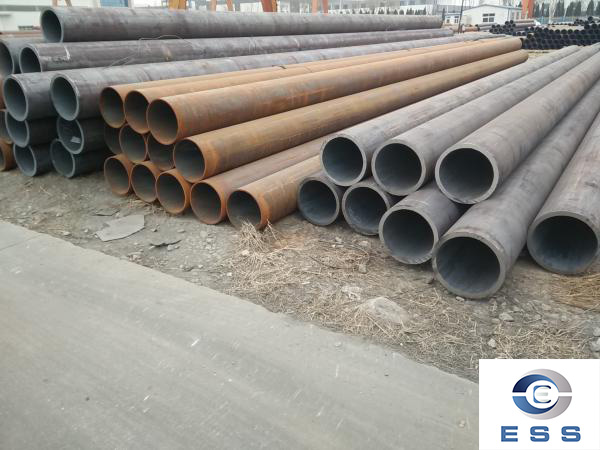Identification of inferior carbon steel pipe

Carbon steel pipe is a kind of steel pipe. It is made of solid round steel or steel ingot as raw material, and then made into rough pipe through perforation process, and then made by hot rolling or cold drawing. Carbon steel pipes on the market are divided into three types according to the carbon content: high, medium and low. Different types have different performance and application range. They should be selected according to the actual use environment.
1. Observe the surface quality
The surface of inferior carbon steel pipes usually has defects such as unevenness, scars, cracks, burrs, etc. In the cross section, there may be distortion, skewness or non-roundness. High-quality carbon steel pipes should have a smooth and neat surface without visible defects.
a Whether the surface of the steel pipe is folded. If there are many different fold lines on the surface of the steel pipe, it means that the product is an inferior product. If the manufacturer chooses to reduce the amount of materials in order to pursue production efficiency during the production process, it will cause the steel pipe to be rolled. Once the steel pipe is folded, it is easy to crack when it is bent later.
b. Whether there are pits on the surface of the
steel pipe. If there are pits on the surface of the steel pipe, it means that the product is a low-quality product. The reason why the steel pipe has pits is generally because the rolling groove is worn too severely, resulting in irregular problems on the surface of the steel pipe. In order to pursue profits, many bad manufacturers often exceed the rolling groove.
c. Whether there are cracks on the surface of the steel pipe. If there are cracks on the surface of the steel pipe, it means that the product is a low-quality product. The reason why the steel pipe has cracks is generally because the manufacturer uses adobe when producing steel pipes, and the adobe generally has more pores and is prone to cracking during the cooling process. When it is rolled, it will naturally leave cracks.
d. Whether there are scratches on the surface of the steel pipe. If the manufacturer's production equipment is very simple, burrs are likely to appear, scratching the surface of the steel pipe. If the surface of the steel pipe is deeply scratched, the strength of the steel pipe will be reduced, affecting the performance and service life of the steel pipe.
2. Check the uniformity of wall thickness
When purchasing carbon steel pipes, you can use measuring tools to measure their wall thickness to see if it is within the specified range, and check whether its wall thickness is uniform. Poor-quality carbon steel pipes may have uneven wall thickness, which will seriously affect their performance and safety.
3. Detect chemical composition
The chemical composition of poor-quality carbon steel pipes may not meet the standard requirements, such as too high or too low carbon content, excessive impurity elements, etc. This requires detection by professional chemical analysis equipment. High-quality carbon steel pipes should strictly control their chemical composition in accordance with standard requirements.
4. Verify mechanical properties
Poor-quality carbon steel pipes may not meet the mechanical property requirements specified in the standard, such as tensile strength, yield strength, elongation, etc. This needs to be verified by tensile tests, impact tests and other methods. High-quality carbon steel pipes should have good mechanical properties to meet various load requirements during use.
5. Check
weld quality
The weld of a carbon steel pipe is an important indicator of its quality. Poor-quality carbon steel pipes may have problems such as uneven welds, incomplete penetration, and burn-through. It can be verified by non-destructive testing, macroscopic inspection and other methods. High-quality carbon steel pipes should have uniform and complete welds without visible defects.
6. Perform metallographic analysis
Metallographic analysis is a method of observing the microstructure of metals or alloys under a microscope. Through metallographic analysis, we can find possible structural defects inside carbon steel pipes, such as excessive grain size, segregation, inclusions, etc. High-quality carbon steel pipes should have uniform metallographic structure without obvious defects.
7. Check the qualifications of suppliersChoosing a qualified supplier is an important way to avoid buying inferior carbon steel pipes. Qualified suppliers usually have a strict quality management system and guarantee product quality. Before purchasing, you can ask the supplier to provide relevant product quality certificates, such as material certification, performance test reports, etc.
Read more: Roughness of carbon steel pipe












 Eastern Steel Manufacturing Co.,Ltd not only improve product production and sales services, but also provide additional value-added services. As long as you need, we can complete your specific needs together.
Eastern Steel Manufacturing Co.,Ltd not only improve product production and sales services, but also provide additional value-added services. As long as you need, we can complete your specific needs together.










